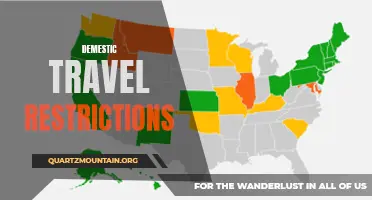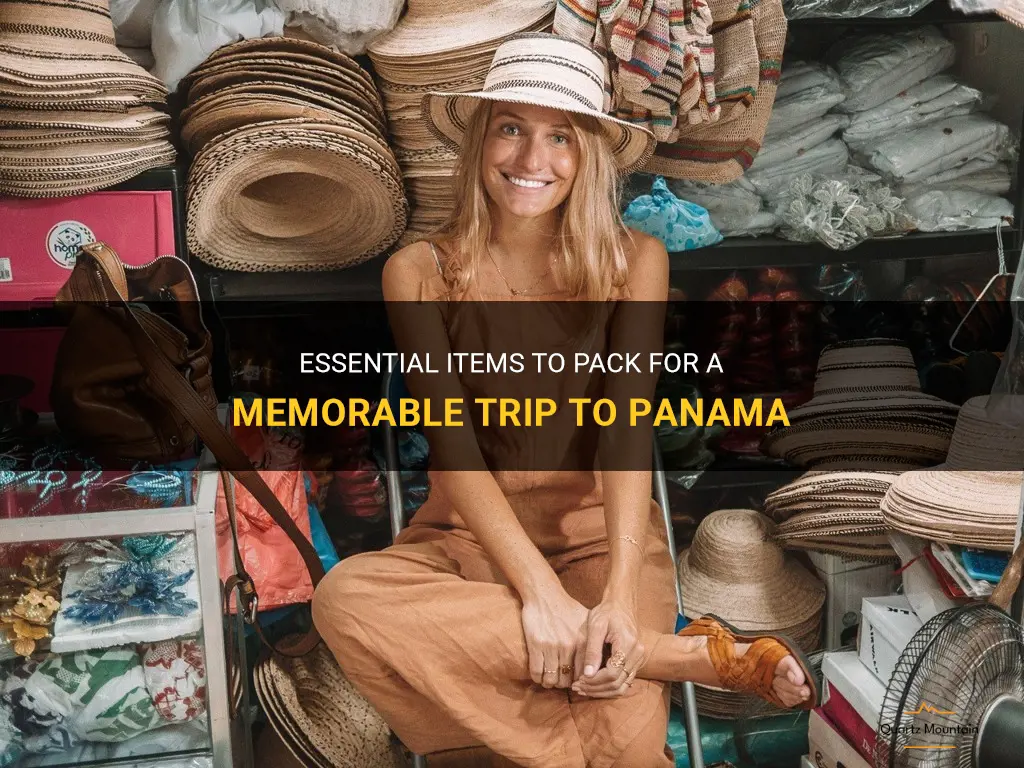
Are you planning a trip to Panama? As you embark on this memorable journey to explore the rich culture, vibrant landscapes, and stunning biodiversity of this Central American gem, it's essential to pack wisely. To ensure you have everything you need for a successful and enjoyable trip, we have compiled a list of essential items to pack for a memorable adventure in Panama. From sun protection to insect repellent, these items will help you make the most of your time in this beautiful country. So, grab your suitcase and get ready for an unforgettable trip to Panama!
What You'll Learn
- What are the essential items to pack when visiting Panama?
- Are there any specific clothing items or accessories that are recommended for the climate in Panama?
- Are there any recommended items to pack for outdoor activities or excursions in Panama?
- Are there any specific medications or health-related items that should be included in a packing list for Panama?
- Are there any cultural sensitivity considerations when packing for a trip to Panama?

What are the essential items to pack when visiting Panama?
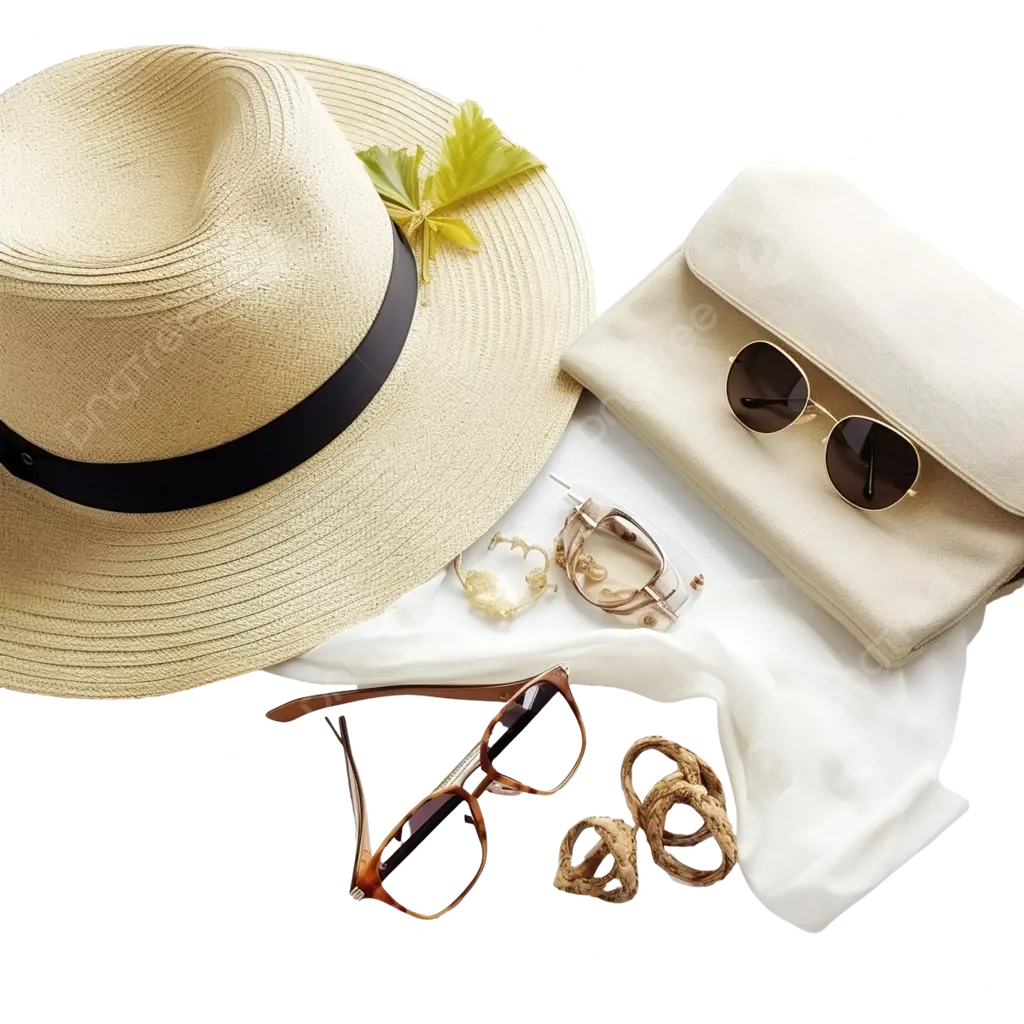
When planning a trip to Panama, it is essential to pack wisely to ensure a comfortable and enjoyable experience. The following items should be on your packing list to make the most out of your visit to this beautiful country.
- Lightweight clothing: Panama has a tropical climate, so pack light, breathable clothing to stay cool. Opt for loose-fitting clothes made of cotton or linen, and don't forget to pack a hat and sunglasses to protect yourself from the sun.
- Swimwear: With its stunning beaches and crystal-clear waters, Panama offers numerous opportunities for swimming and water activities. Make sure to pack your favorite swimsuit or trunks, so you can take full advantage of the pristine beaches and indulge in water sports.
- Insect repellent: Like many tropical countries, Panama is home to various insects, including mosquitoes. Protect yourself from bug bites by packing a reliable insect repellent containing DEET or another effective repellent ingredient. This will help prevent mosquito-borne diseases such as dengue or Zika.
- Sunscreen: The sun in Panama can be intense, so it's crucial to pack sunscreen with a high SPF rating. Apply it generously before heading out and reapply every few hours, especially if you are spending time outdoors or engaging in water activities.
- Comfortable walking shoes: Panama offers a plethora of outdoor activities and sightseeing opportunities, including hiking trails, rainforests, and historical sites. Pack a pair of comfortable walking shoes or sneakers to explore these attractions without discomfort. It's also a good idea to bring a pair of water shoes for activities such as river crossings or exploring rocky coastlines.
- Rain gear: Panama experiences both dry and rainy seasons. If you're visiting during the wetter months, it's wise to pack a lightweight raincoat or poncho to stay dry during sudden downpours. Additionally, a small umbrella or a foldable rain hat can come in handy.
- Travel adapter: Panama uses Type A and Type B power outlets, so remember to pack a travel adapter if your devices have different plug types. This will allow you to charge your electronic devices and stay connected throughout your trip without any hassle.
- Medications and personal care items: It's important to pack any necessary medications and personal care items you may need during your trip. It's also a good idea to bring a small first aid kit with essentials like adhesive bandages, antiseptic ointment, and pain relievers. While these items are readily available in Panama, having your preferred brands or specific medications on hand can be more convenient.
- Travel documents: Don't forget to pack your passport, identification, and any other necessary travel documents. It's also wise to keep electronic copies of these documents, just in case of loss or theft. Having a printed copy of your hotel reservations, flight details, and travel insurance information is also recommended.
- Money and credit cards: Ensure you have enough cash and a credit card with a chip for easy transactions in Panama. While many places accept cards, having cash on hand can be useful, especially when visiting more remote areas or small businesses. It's always a good idea to inform your bank about your travel plans to avoid any issues with using your card overseas.
Remember, it's crucial to pack light and prioritize essentials while keeping in mind the activities you plan to engage in during your trip. By packing smartly, you'll be well-prepared to explore Panama and make lasting memories.
Essentials to Pack in Your Backpack for Iceland's Adventure
You may want to see also

Are there any specific clothing items or accessories that are recommended for the climate in Panama?
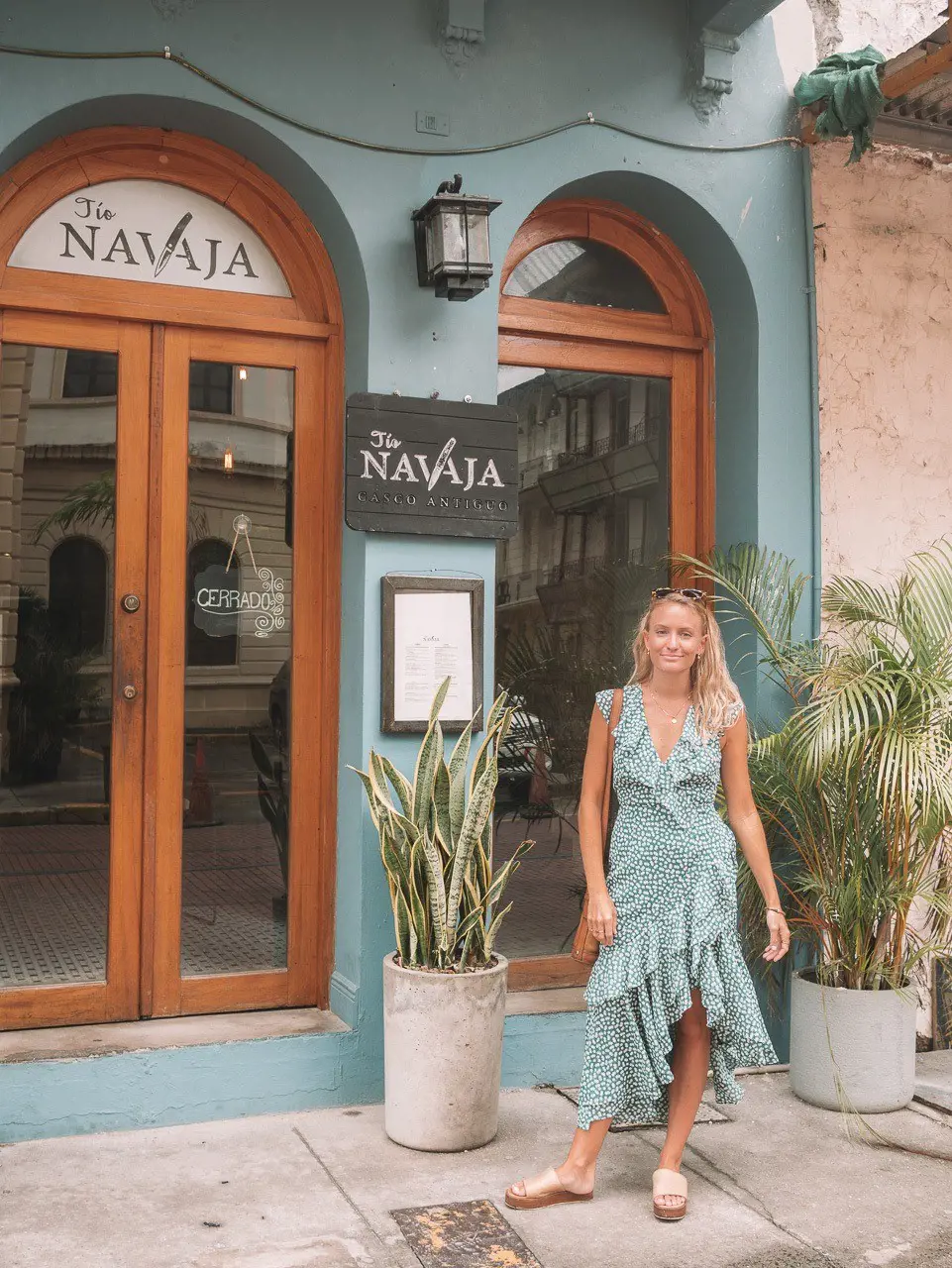
When it comes to dressing for the climate in Panama, it's important to consider the hot and humid conditions that prevail throughout the year. The following are some specific clothing items and accessories that are recommended for staying comfortable in this tropical climate:
- Lightweight and Breathable Fabrics: Opt for clothing made from natural and breathable fabrics like cotton, linen, and bamboo. These materials allow air to circulate and help wick away moisture from the body, keeping you cool and comfortable.
- Loose-Fitting Clothing: Choose loose-fitting garments that allow for better air circulation and prevent excessive sweating. Tight clothes can trap heat and moisture, leading to discomfort and potential skin issues.
- Sun Protection: With its proximity to the equator, Panama experiences strong sunlight throughout the year. Protect yourself from harmful UV rays by wearing a wide-brimmed hat to shade your face and neck. Additionally, wearing lightweight long-sleeved shirts and pants can offer added protection to your skin.
- Footwear: Opt for open-toed shoes or sandals to allow your feet to breathe and minimize sweating. Closed-toe shoes can lead to sweaty feet and increase the risk of fungal infections. However, be cautious of the terrain, as some areas in Panama can be uneven or have rocky surfaces which require sturdier footwear.
- Swimwear: Panama is famous for its beautiful beaches and crystal-clear waters. Pack your favorite swimsuits or swim trunks to enjoy the pristine beaches and take a refreshing dip in the ocean.
- Rain Gear: Panama experiences a rainy season, typically from May to November. It's a good idea to pack a lightweight rain jacket or poncho to keep dry during sudden downpours. Additionally, consider carrying a small umbrella or a foldable rain hat for added protection.
- Insect Repellent: Panama is home to various insects, including mosquitoes that can transmit diseases like dengue and Zika. Apply insect repellent containing DEET to exposed skin, particularly during the early morning and late afternoon when mosquitoes are most active.
When planning your wardrobe for Panama, it's also essential to consider the activities you'll be engaging in. If you plan on hiking in the rainforest or visiting higher elevations where temperatures can be cooler, layering may be necessary to accommodate varying conditions.
In conclusion, dressing appropriately for the climate in Panama involves choosing lightweight, breathable fabrics, loose-fitting clothes, and sun-protective accessories. Keep in mind that staying comfortable and protected from the sun and insects should be a priority. By following these recommendations, you can enjoy your time in Panama while staying comfortable and safe.
Essential Items to Pack for a Girl's Trip: A Guide to Traveling in Style
You may want to see also

Are there any recommended items to pack for outdoor activities or excursions in Panama?
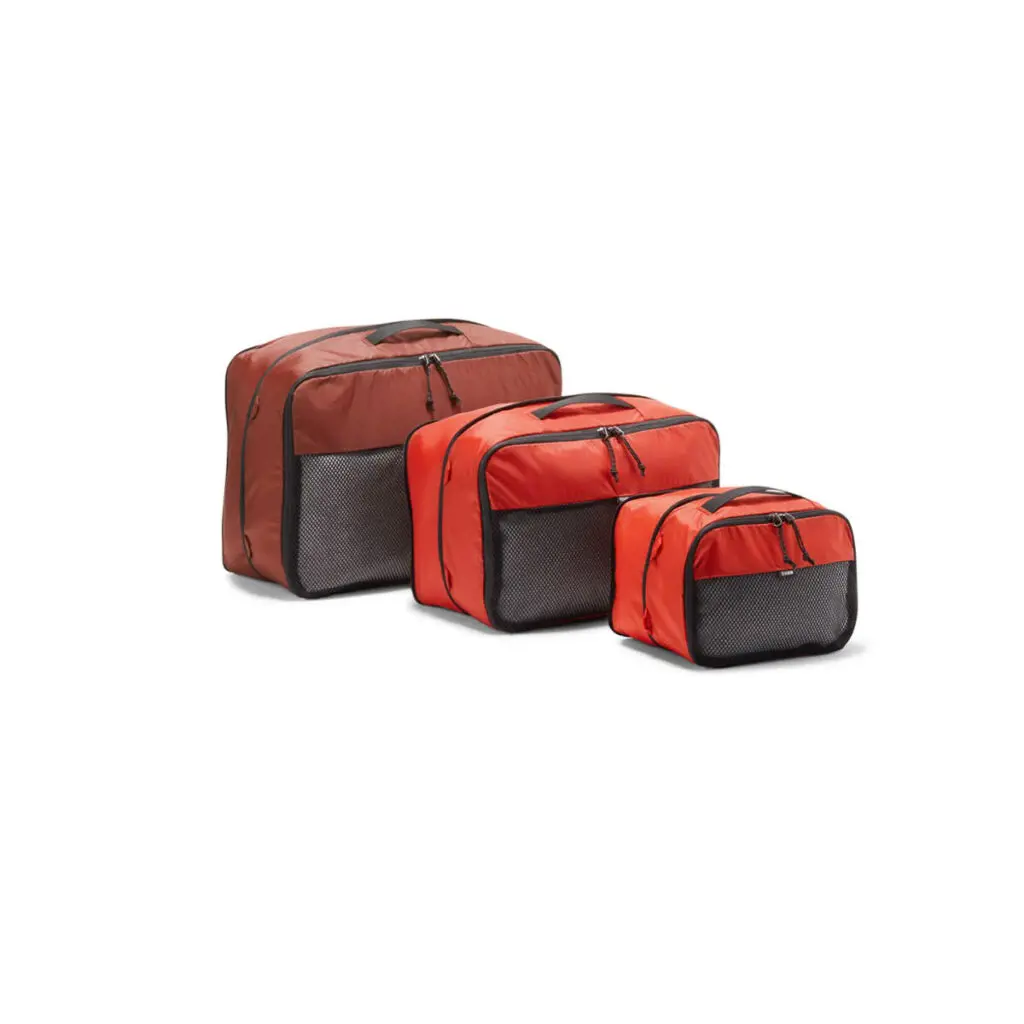
When planning for outdoor activities or excursions in Panama, it is important to pack the necessary items to ensure you are well-prepared and comfortable during your adventure. Whether you are hiking through the rainforest, exploring the beautiful beaches, or visiting the historic sites, here are some recommended items to pack:
- Comfortable Clothing: Panama's tropical climate calls for lightweight, breathable clothing. Opt for moisture-wicking materials that can help keep you cool and dry, such as synthetic blends or natural fibers like cotton and linen. Pack a mix of short-sleeve and long-sleeve shirts, as well as shorts and pants. Don't forget to bring a waterproof jacket or poncho in case of sudden rain showers.
- Sturdy Footwear: A pair of comfortable and durable shoes is essential for outdoor activities in Panama. Depending on the type of adventure you have planned, choose between hiking boots, sandals, or water shoes. For hiking in the rainforest or uneven terrain, sturdy closed-toe shoes with good traction are recommended.
- Sun Protection: Panama's location near the equator means strong and direct sunlight. Pack sunscreen with a high SPF, sunglasses to protect your eyes from harmful UV rays, and a wide-brimmed hat to shield your face and neck from the sun. A lightweight, long-sleeve shirt and pants can also provide an extra layer of protection.
- Insect Repellent: The tropical climate in Panama is home to insects such as mosquitoes, so it is important to pack insect repellent. Look for products that contain DEET or other effective ingredients to keep mosquitoes and other bugs at bay. Additionally, consider packing lightweight and breathable clothing that covers your arms and legs to minimize exposure to bites.
- Water Bottle and Filter: Staying hydrated is crucial, especially in Panama's hot and humid climate. Carry a reusable water bottle and a water filter or purification tablets to ensure access to clean drinking water during your outdoor activities. It is also a good idea to pack some electrolyte packets to replenish lost minerals due to sweating.
- Snacks and Energy Bars: Pack some lightweight and nutritious snacks to keep your energy levels up during outdoor activities. Granola bars, trail mix, dried fruits, and nuts are all excellent options that provide a quick boost of energy. Additionally, consider packing some local fruits or snacks to try along the way.
- First Aid Kit: It is always a good idea to carry a basic first aid kit when venturing into the outdoors. Include items such as band-aids, antiseptic wipes, pain relievers, and any prescription medications you may need. Don't forget to bring any necessary personal medications or allergy remedies as well.
- Camera and Binoculars: Panama offers breathtaking natural beauty and wildlife sightings. Capture the memories and enjoy the experience by packing a camera or binoculars to observe the diverse wildlife, exotic plants, and stunning landscapes.
Remember, the specific items you pack may vary depending on the activities you have planned and your personal preferences. It is always a good idea to do some research beforehand and consult with local guides or tour operators for any specific recommendations. Packing these essentials will help ensure that you have a comfortable and enjoyable outdoor adventure in Panama.
Essential Packing List for Hiking the South Downs Way
You may want to see also

Are there any specific medications or health-related items that should be included in a packing list for Panama?
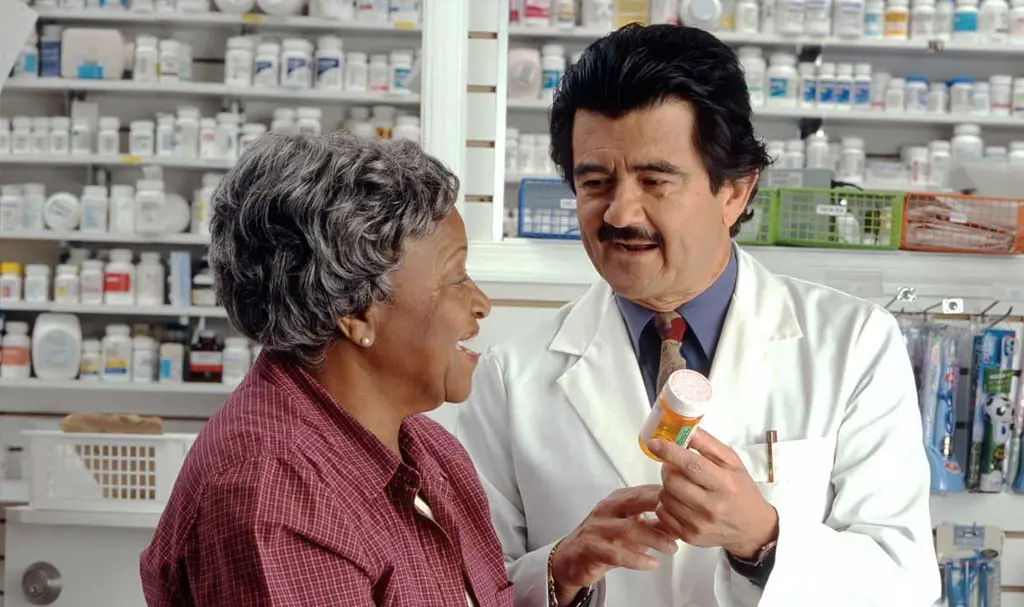
When preparing for a trip to Panama, it is important to consider any specific medications or health-related items that should be included in your packing list. Here are some recommendations to ensure you have a safe and healthy journey:
- Mosquito repellent: Panama is known for its tropical climate and high mosquito presence. It is essential to bring a repellent that contains DEET or other recommended ingredients to protect yourself against mosquito-borne diseases such as dengue, Zika, and malaria.
- Sunscreen: The tropical sun can be quite intense in Panama, so make sure to pack a sunscreen with a high sun protection factor (SPF). This will help prevent sunburn and reduce the risk of skin damage caused by UV radiation. Additionally, remember to reapply it regularly, especially if you are planning to spend a lot of time outdoors.
- Prescription medications: If you take any prescription medications, be sure to bring an adequate supply for the duration of your trip. It is also advisable to carry a copy of your prescription and any relevant medical documents in case you need them for reference or in case of emergency.
- Over-the-counter medications: It is always a good idea to pack a basic first aid kit that includes over-the-counter medications for common ailments such as pain relievers, antihistamines for allergies, and anti-diarrheal medicines. These can come in handy if you experience minor health issues while in Panama.
- Antimalarial medication: Depending on the region of Panama you plan to visit, you may need to take antimalarial medication as a preventive measure. Consult with your healthcare provider or a travel medicine specialist to determine whether it is necessary for your specific destination.
- Water purification tablets: While tap water in Panama is generally safe to drink in urban areas, it is recommended to use bottled or purified water, especially in remote or rural locations. Packing water purification tablets can be a good backup plan in case clean drinking water is not readily available.
- Insect bite relief cream: In case you do get bitten by mosquitoes or other insects, it is useful to have an insect bite relief cream or gel on hand to alleviate any itching or discomfort. Calamine lotion or hydrocortisone cream can also be effective in soothing irritated skin.
In addition to the items mentioned above, it is essential to have travel insurance that provides coverage for medical emergencies in Panama. Always consult with a healthcare professional or travel medicine specialist before your trip to receive personalized advice based on your specific health needs and the areas you plan to visit.
Essential Items to Pack for Overnight Calls on the Job
You may want to see also

Are there any cultural sensitivity considerations when packing for a trip to Panama?
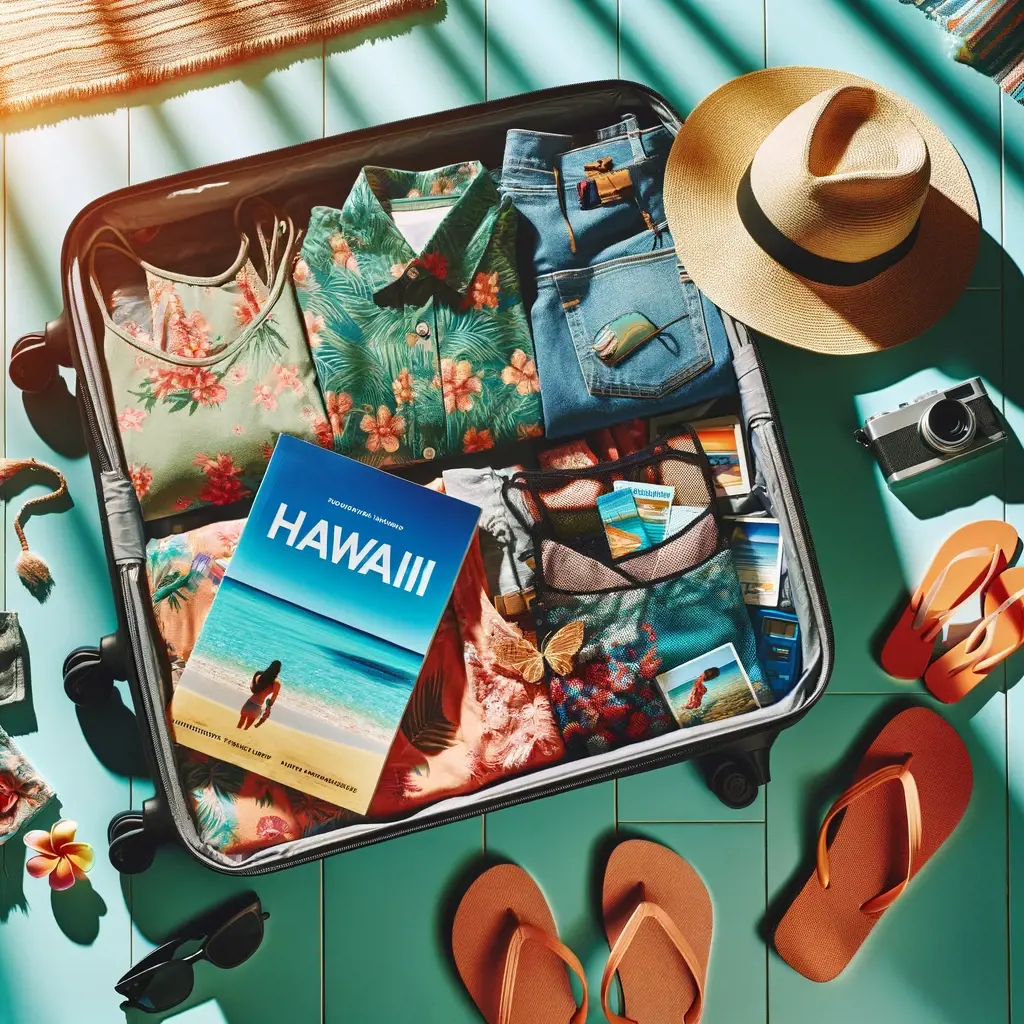
When planning a trip to Panama, it's important to consider the cultural sensitivity of the country. Panama has a rich and diverse culture, with influences from indigenous tribes, Spanish colonialism, and Afro-Caribbean traditions. To ensure that you respect the local customs and avoid any unintentional offense, here are some key considerations when packing for your trip to Panama.
Dress modestly: While Panama is a relatively modern and cosmopolitan country, it still holds conservative values, especially in rural areas and on religious sites. When visiting churches, temples, or indigenous villages, it's important to dress modestly and respectfully. This means avoiding revealing clothing such as shorts, tank tops, and low-cut tops. Instead, opt for lightweight and loose-fitting clothing that covers your shoulders and knees.
Example: Instead of packing short skirts and sleeveless tops, consider packing lightweight trousers, long skirts, and shirts with sleeves to adhere to the local customs.
Pack appropriate beachwear: Panama boasts beautiful beaches and coastal areas, making swimwear an essential item when visiting the country. However, it's important to consider the cultural norms and modesty expectations when choosing your beachwear. While bikinis are generally accepted on most public beaches and resorts, it's a good idea to bring a cover-up or sarong to wear while walking to and from the beach. This shows respect for the local culture and ensures that you don't draw unnecessary attention.
Example: Instead of solely relying on revealing bikinis, pack a comfortable and stylish cover-up or sarong to wear when not swimming.
Respect the indigenous communities: Panama is home to various indigenous groups, including the Guna, Emberá, and Ngäbe-Buglé tribes. These communities have their own unique traditions and cultural practices. When visiting indigenous communities, it's essential to be respectful and sensitive to their customs. Seek permission before taking photographs, refrain from touching sacred objects or people without permission, and always listen and follow the guidance of the local guides or leaders.
Example: Instead of rushing to take photos without permission, take the time to interact and understand the customs of the indigenous communities. Ask for permission and follow any guidelines provided by the locals.
Be mindful of language barriers: While many Panamanians speak English, especially in tourist areas, the majority of the population speaks Spanish. It's a good idea to learn some basic Spanish phrases before your trip to Panama. This includes greetings, pleasantries, and phrases related to ordering food or asking for directions. Learning a few key phrases not only shows respect for the local language but can also enhance your travel experience by fostering better connections with the locals.
Example: Instead of assuming everyone speaks English, make an effort to learn basic Spanish phrases such as "hello," "thank you," and "where is the nearest restaurant?" This will show cultural sensitivity and make your interactions more enjoyable.
In conclusion, when packing for your trip to Panama, it's important to consider cultural sensitivity. Dressing modestly, packing appropriate beachwear, respecting indigenous communities, and being mindful of language barriers are all crucial considerations. By adhering to these guidelines, you can ensure a respectful and enjoyable experience while exploring the beautiful culture of Panama.
Essential Items to Pack the Court for Optimal Performance
You may want to see also
Frequently asked questions
When packing for a trip to Panama, it is important to consider the tropical climate. Bring lightweight and breathable clothing such as shorts, t-shirts, and sundresses, as well as swimsuits for the beaches and pools. Don't forget to pack a hat, sunglasses, and sunscreen to protect yourself from the strong sun. It is also a good idea to bring a light sweater or jacket for cooler evenings or if you plan to visit the mountains.
What essentials should I pack for a trip to Panama?
Some essential items to pack for a trip to Panama include insect repellent to protect yourself from mosquitoes, a reusable water bottle to stay hydrated, a comfortable pair of walking shoes for exploring the cities and hiking trails, and a waterproof bag or case for your electronics and important documents. Don't forget to bring adapters if your electronic devices require different plug types.
Do I need to pack any specific medications for a trip to Panama?
It is recommended to pack a small first aid kit with basic medications such as pain relievers, anti-diarrheal medication, and any prescription medications you require. It is also a good idea to bring insect bite cream and hand sanitizer. If you have any specific medical conditions, it is advisable to consult with your doctor and bring any necessary medications or medical supplies.
What other items should I consider packing for a trip to Panama?
Some other items to consider packing for a trip to Panama include a travel umbrella or raincoat for unexpected rain showers, a travel guidebook or map for navigating the cities and tourist attractions, a money belt or secure pouch for keeping your valuables safe, and a camera or smartphone to capture all the amazing sights and memories during your trip. Additionally, you may want to bring a Spanish phrasebook or download a translation app to help you communicate with locals.







